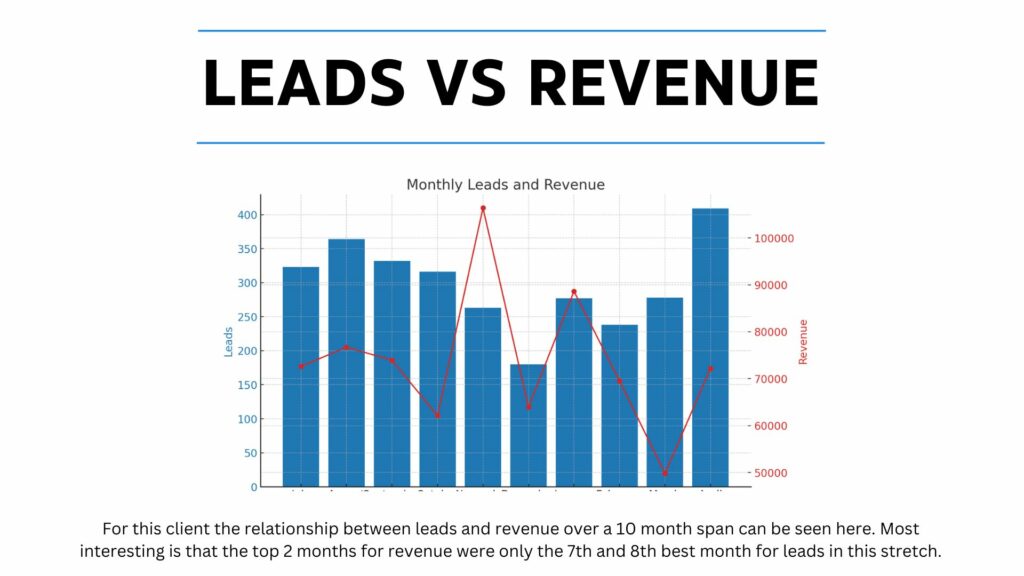Growing a business is hard! There are countless things you could be doing to grow. How do you know which to choose and when you do pick can you tell if it really worked? One thing that is more straightforward is the goal itself…..to grow profitability, which for our clients often comes in the form of new business revenue. However, a recent case study from one of our clients revealed a surprising disconnect: the number of leads generated did not directly correlate to an increase in new business revenue. This discovery underscores two crucial lessons. First, in marketing, the numbers that truly matter often get overlooked. And second, it’s vital to adopt a holistic approach to business development, ensuring that sales and marketing work hand in hand.
The Misalignment of Metrics
We started with a client who successfully ramped up lead generation through our targeted marketing efforts. Yet, despite the lead growth, the expected boost in new business revenue didn’t happen. This misalignment prompted us to dig deeper. It became clear that while metrics like clicks, web traffic, and leads are important, they’re just predictors—not the ultimate measure of success.
What truly mattered to our client was new business revenue. We were missing the bigger picture by focusing too much on vanity metrics. This realization drove home the point that we must prioritize what counts.

Tracking The KPIs That Matter
To address the issue, we needed to shift our focus from predictive metrics (clicks, web traffic, leads) to success metrics (new business revenue). Predictive metrics can hint at potential success, but only success metrics confirm it. Our case study showed that focusing on the wrong metrics prevented us from achieving real business growth.
This shift required us to redefine our approach. We started by understanding the client’s core business objectives and aligning our metrics with those goals. This meant putting new business revenue at the forefront of our performance evaluations.
A Holistic Approach to Business Development
The biggest action item was the need to work closer with their sales team. Too often, these departments (sales and marketing) operate in silos, leading to miscommunicatioen and missed opportunities. Effective communication and collaboration between sales and marketing are essential for generating and fully capitalizing on the right leads.
We immediately dove into their sales processes and operations. We started thinking of ourselves as an extension of the sales team, and our approach quickly shifted to not only growing the number of quality leads but also supporting the sales team in realizing their revenue potential.
Our case study revealed that focusing on the right KPIs and fostering a collaborative environment between sales and marketing is essential for driving real business growth. Predictive metrics can hint at potential success, but true success is measured by the ultimate KPI: in this case, new business revenue.
As businesses navigate the complexities of the market, it’s crucial to evaluate and adapt strategies to focus on meaningful KPIs. By bridging the gap between marketing and sales, companies can ensure they not only generate leads but also fully capitalize on them, driving substantial and sustainable business growth.
I encourage you to examine your metrics more closely and consider how a collaborative approach between marketing and sales can propel your business towards its ultimate goals. The future of business development lies in measuring what matters and working together to achieve succes
